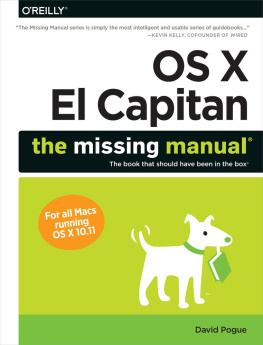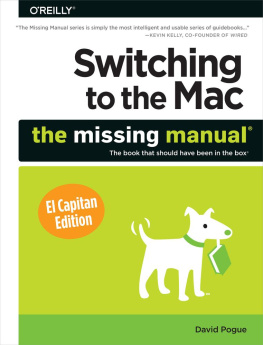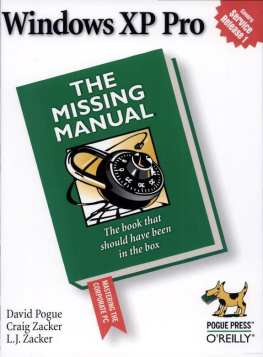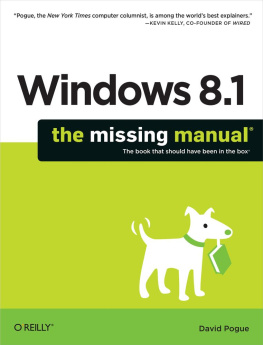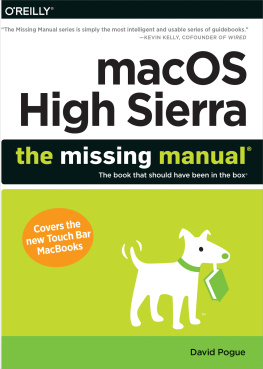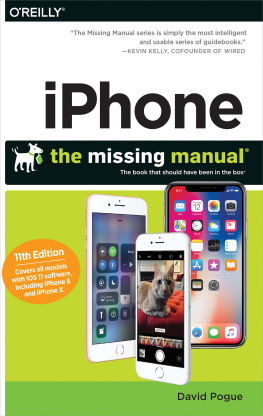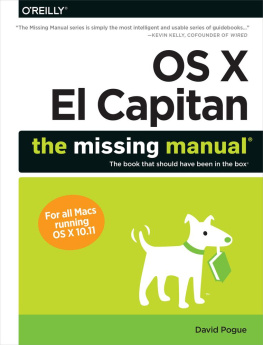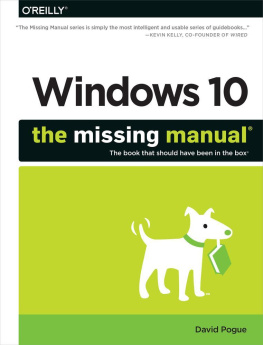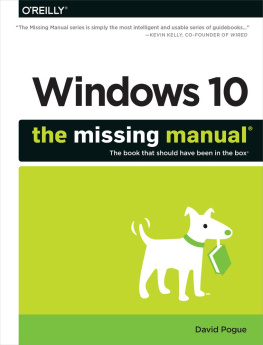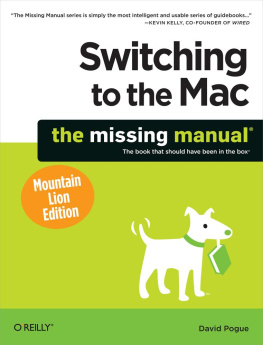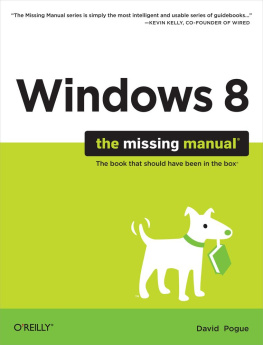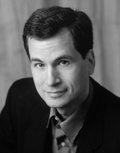In his other life, David is a former Broadway show conductor, a magician, and a funny public speaker. He lives in Connecticut with his wife, Nicki, and three awesome children.
Links to his columns and videos await at .
About the Creative Team
Julie Van Keuren (editor, indexer, layout) quit her newspaper job in 2006 to move to Montana and live the freelancing dream. She and her husband, M.H. (whos living the novel-writing dream), have two teenage sons, Dexter and Michael. Email : .
Kirill Voronin (technical editor) is the head of an IT consulting company, aptly called Shortcut, based in Moscow, Russia. He has worked with Macs since the 90s, and hes an Apple Certified System Administrator and Apple Certified Trainer for IT courses. He lives with his wife, Maria, and son, Nil. In his spare time, he enjoys backpacking. Email: .
Phil Simpson (book design) runs his graphic design business from Southbury, Connecticut. His work includes corporate branding, publication design, communications support, and advertising. In his free time, he is a homebrewer, ice cream maker, wannabe woodworker, and is on a few tasting panels. He lives with his wife and four great felines. Email: .
Brian Jepson (technical consultant) is an OReilly editor and hacker, and co-organizer of Providence Geeks and the Rhode Island Mini Maker Faire. Hes also been involved in various ways over the years with AS220, a nonprofit arts center in Providence, Rhode Island. Email: .
Acknowledgments
Over the years, over the 11 editions of this book, many friends and colleagues have contributed enthusiasm, expertise, and even prose to this books editions. They include Zachary Brass, Dan Pourhadi, Rich Koster, J.D. Biersdorfer, Teresa Noelle Roberts, Ben Waldie, Brian Sawyer, and Lesa Snider.
In addition to the dream team members identified above, I owe debts of thanks to OReillys Missing Manuals editor-in-chief, Nan Barber; Apples Colin Smith for going beyond the call of duty to chase down tweaky tech answers; Philip Michaels, who wrote about Game Center for this book; a crack team of proofreaders, Kellee Katagi, Judy Le, and Nancy Young; and my assistant Jan Carpenter, whose help with this books 450 illustrations made my survival possible; and Julie Van Keuren, whose Missing Manual role has grown from humble copy editor to full-blown editorial and design factory.
Ive never met, or even spoken to, Kirill Voronin; he lives in Moscow. But he submitted so many corrections to the previous editions Errata page online that I wound up hiring him to be the tech editor for this bookand he knocked it out of the park.
I also wish I could send out an I Made the Book Better! T-shirt to every reader who ever took the time to write with corrections, suggestions, tips, and tricks. And thanks, as always, to David Rogelberg for believing in the idea.
Above all, this book owes its existence to the patience and affection of Nicki, Kelly, Tia, and Jeffrey. They make these booksand everything elsepossible.
David Pogue
Also by David Pogue
Missing Manuals are witty, well written guides to computer products that dont come with printed manuals (which is just about all of them). Each book features a handcrafted index; cross-references to specific page numbers (not just see ); and an ironclad promise never to put an apostrophe in the possessive pronoun its .
iPhone: The Missing Manual, Ninth Edition
David Pogues Digital Photography: The Missing Manual
iPad: The Missing Manual, Eighth Edition
Windows 10: The Missing Manual
Switching to the Mac: The Missing Manual, El Capitan Edition
Introduction
OS X is an impressive technical achievement; many experts call it the best personal-computer operating system on earth. But beware its name.
The X is meant to be a Roman numeral, pronounced ten. Dont say, oh ess ex. Youll get funny looks.
In any case, OS X El Capitan is the 11th major version of Apples Unix-based operating system. Its got very little in common with the original Mac operating system, the one that saw Apple through the 1980s and 1990s. Apple dumped that in 2001, when CEO Steve Jobs decided it was time for a change. Apple had spent too many years piling new features onto a software foundation originally poured in 1984. Programmers and customers complained of the spaghetti code the Mac OS had become.
So underneath OS Xs classy, translucent desktop is Unix, the industrial-strength, rock-solid OS that drives many a website and university. Its not new by any means; in fact, its decades old and has been polished by generations of programmers.
Note
Apple no longer refers to its computer operating system as Mac OS X. Now its just OS X, without the Mac. Why? Apple says its to match up better with iOS, its operating system for the iPhone and iPad.
Whats New in El Capitan
You know how Apple redesigns the iPhone in every even-numbered yearand then comes out with a slightly tweaked s version in odd-numbered years? (iPhone 4s, 5s, 6s)?
Well, it does the same thing with the Macs operating system. In 2014, Apple released a major redesign called OS X Yosemite. In 2015, its a slightly tweaked version called El Capitan. Maybe a better name would have been Yosemite S.
Why is it called El Capitan? Because El Capitan is a rock formation within Yosemite National Park. That naming scheme matches up with past annual successions of OS X versions: Lion and then Mountain Lion, Leopard and then Snow Leopard, and so on.

